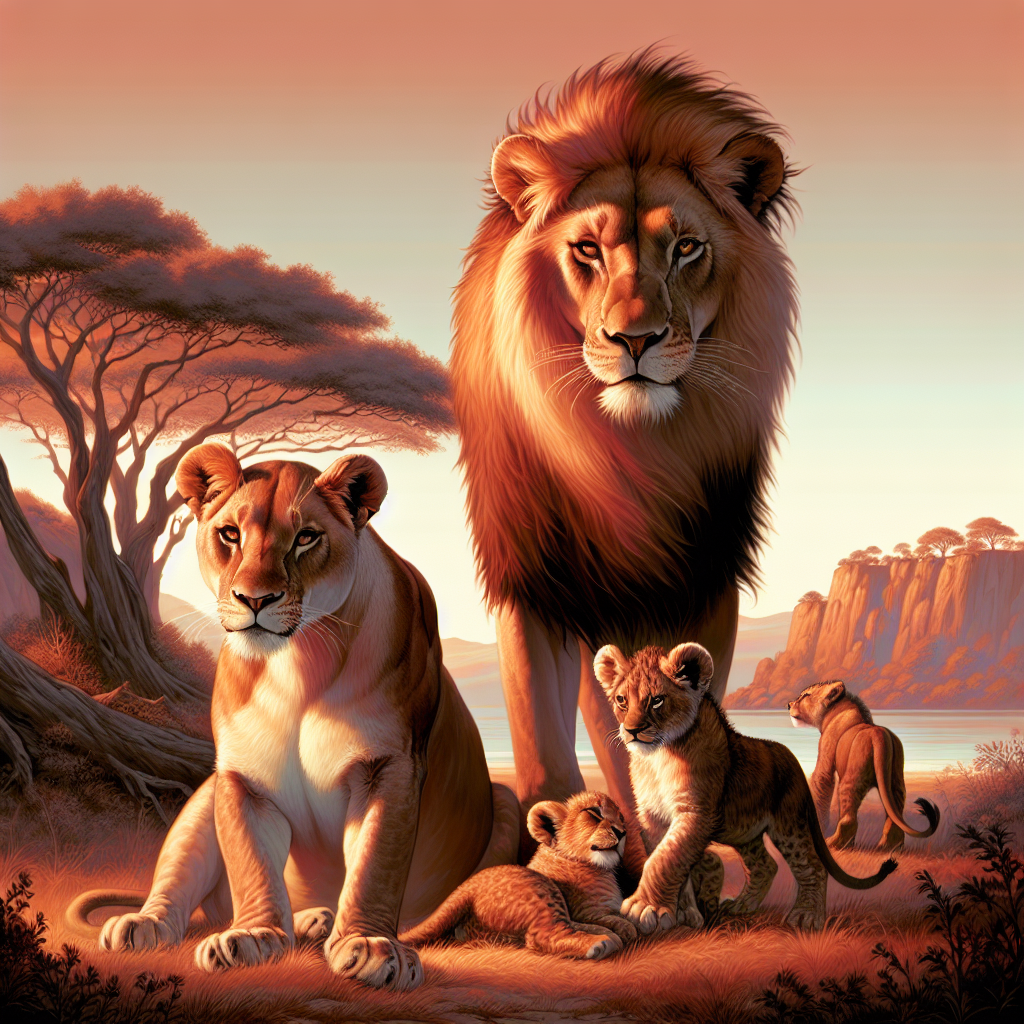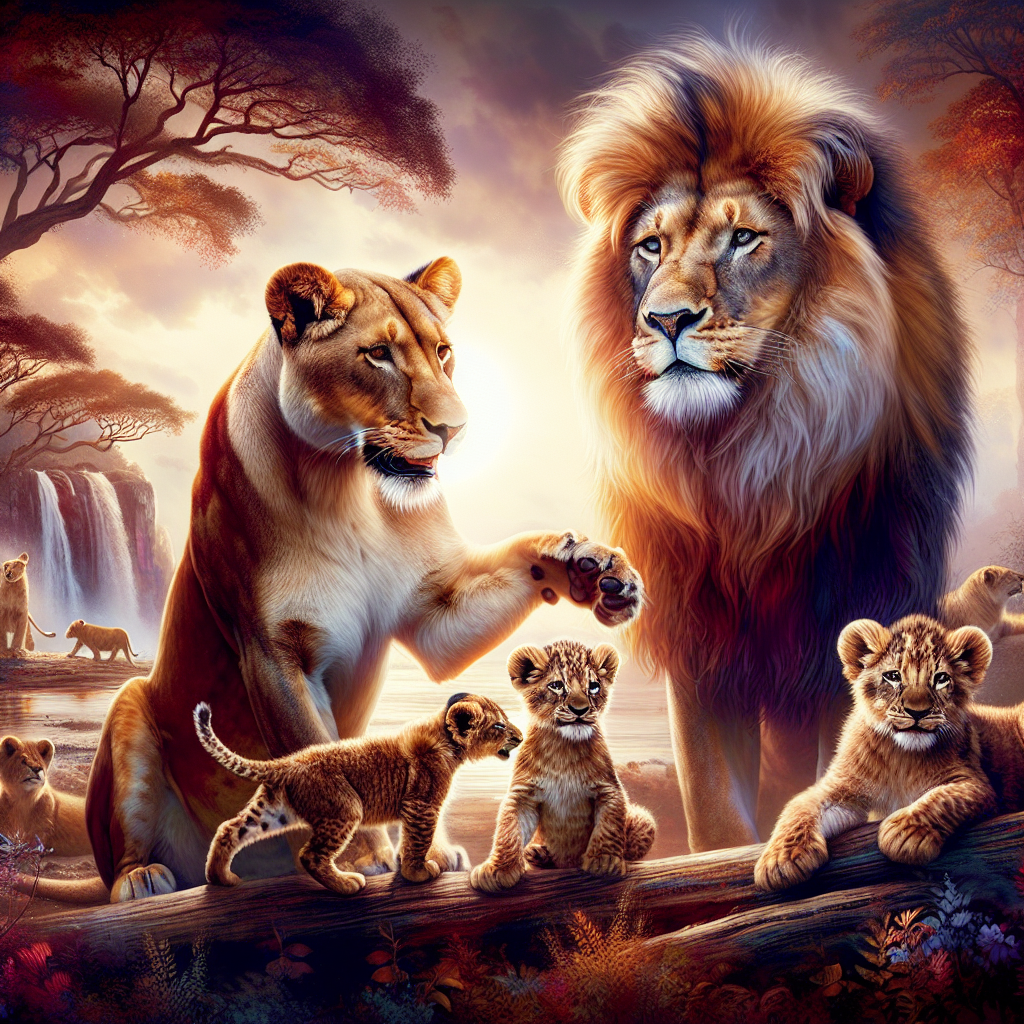You have probably seen lions depicted as majestic, fiercely protective creatures in movies, books, or even on safaris. Ever wondered what goes on behind the scenes of their reproduction and family life? Look no further – this complete guide will provide you with all the fascinating details on how lions reproduce and the dynamics within their pride. From mating rituals to the upbringing of cubs, this article will take you on an exciting journey into the world of lion reproduction and family life.

Lion Reproduction
A. Mating Behavior
In the world of lions, mating behavior plays a crucial role in ensuring the survival of the species. Lions are polygamous animals, with a dominant male mating with multiple females within his pride. The process begins with the dominant male asserting his dominance over a pride by defeating the previous alpha male. Once the takeover is complete, the victorious lion safeguards his territory and mates with the lionesses.
B. Breeding Season
Lions do not have a specific breeding season. Instead, they can reproduce throughout the year. The females, however, may synchronize their estrus cycles to increase the chances of successful mating. This synchronization leads to multiple lionesses within a pride going into heat simultaneously, which intensifies competition among the males and ensures the strongest genes are passed on to the next generation.
C. Courtship Rituals
Courtship rituals among lions involve both visual and vocal displays. The initial interaction often consists of the male rubbing his head against the female’s body, followed by gentle nuzzling and grooming. Once the female displays receptivity by assuming a mating position, the male proceeds to mount her. During this process, the pair emits low, rumbling roars, further reinforcing their social bonds. These courtship rituals serve as a means of communication and strengthen the bond between the male and female.
D. Copulation Process
When a male lion mounts a female for copulation, he grasps onto her with his forepaws, gripping her neck and maintaining control. This gripping behavior is believed to stimulate ovulation in the female. Copulation itself is a short-lived event, lasting less than a minute. However, successful mating results in the transfer of sperm, ensuring fertilization and potential reproduction.
E. Gestation Period
After successful copulation, the female lion enters a gestation period that lasts approximately 110 to 120 days. During this time, the lioness will experience physical changes as the growing embryos develop. It is during this period that she seeks seclusion, away from the rest of the pride, to prepare for the birth.
F. Birth and Development
Lion cubs are typically born in secluded areas known as dens. The female lion gives birth to a litter of two to six cubs, which are helpless and blind at birth. The lioness provides complete care and protection to her cubs during their early months of life, nursing them and keeping them close to ensure their safety. As they grow, the cubs begin to explore their surroundings, developing their physical and social skills under their mother’s watchful eye.
Lion Family Life
A. Social Structure
Lions are social animals organized into a hierarchical family structure known as a pride. A pride consists of several lionesses, their offspring, and a dominant male lion. The lionesses form the core of the pride, with familial bonds and cooperation crucial to their survival. The dominant male ensures the security of the pride and protects its territory.
B. Pride Hierarchy
Within a pride, a hierarchical structure exists, with the dominant male at the top. Other males within the pride are typically his offspring from previous matings. The lionesses, on the other hand, hold a more egalitarian position within the hierarchy, with a communal approach to raising their young and hunting for food.
C. Territorial Behavior
Lions are territorial and fiercely protect their home ranges from intruders. The size of a lion pride’s territory varies depending on factors such as food availability and the topography of the area. Roaring, scent marking, and physical confrontations are methods used by lions to mark and defend their territory.
D. Hunting Techniques
Lions are skilled hunters and primarily hunt in groups. Their cooperative hunting techniques involve strategic planning and execution. The lionesses within a pride work together to encircle their prey, using their combined strength and speed to bring down large ungulates. Although the lionesses do most of the hunting, the dominant male often takes charge of the larger kills.
E. Cubs and Motherhood
The lioness is the main caretaker of the cubs within the pride. She provides them with nourishment through nursing and teaches them essential survival skills. Additionally, lionesses are known to share caregiving responsibilities, allowing each other to rest or hunt while the cubs are under the watchful protection of the pride.
F. Male Involvement in Rearing Cubs
The dominant male plays a minimal role in directly caring for the cubs. Instead, his presence serves as a deterrent for potential threats and rival males that may harm the offspring. While the male lion may not interact with the cubs in the same way as the lionesses, his presence contributes to the stability and protection of the pride as a whole.
G. Sibling Interactions
Cubhood is a critical time for the development of social bonds among the lion pride’s younger members. Siblings engage in play, participating in mock fights that help them acquire necessary hunting and fighting skills. These interactions not only strengthen their physical abilities but also establish the foundation for future cooperative behaviors within the pride.
H. Dispersal and Formation of New Colonies
As lion cubs mature, they eventually leave their natal pride in a process known as dispersal. Young males often venture out to seek new territories or to challenge existing dominant males. By establishing new prides or joining existing ones, dispersing lions contribute to genetic diversity and the formation of new lion colonies.
I. Lifespan and Mortality Factors
The average lifespan of a lion in the wild is around 10 to 14 years. However, factors such as food availability, territorial disputes, and diseases can significantly impact their life expectancy. In some cases, males who are overthrown by rival males may face exile or even death. Additionally, lion cubs face a high mortality rate due to predation by other animals and potential territorial conflicts.
J. Human Impact on Lion Family Life
Human activities, such as habitat destruction, poaching, and trophy hunting, have led to a decline in lion populations and disrupted their natural family dynamics. Encroachment on lion habitats has resulted in increased human-lion conflicts, further endangering their survival. Conservation efforts, including protected areas and community initiatives, aim to mitigate these negative impacts and promote the preservation of lion family life.
In conclusion, understanding lion reproduction and family life provides us with valuable insights into the intricacies of their social structures, behaviors, and survival mechanisms. By appreciating these aspects, we can further advocate for their conservation and ensure the continued existence of these majestic creatures in the wild.


